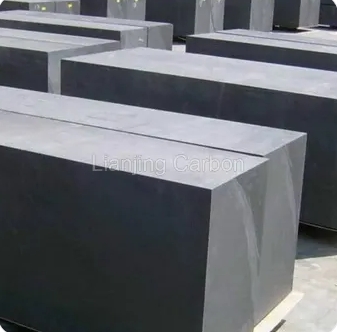How do Graphite Blocks Compare to Other Refractory Materials?
Introduction:
In high-temperature applications, the choice of refractory material is crucial to ensure thermal stability, mechanical strength, and resistance to harsh environments. Among the various options available, graphite blocks have gained significant popularity due to their unique properties and performance. In this article, we will explore how graphite blocks compare to other refractory materials and their advantages in demanding industrial settings.
Thermal Conductivity:
One of the key factors in evaluating refractory materials is their thermal conductivity. Graphite blocks exhibit exceptional thermal conductivity, surpassing many other refractories. This property allows for efficient heat transfer, making graphite blocks highly suitable for applications where rapid and uniform heating or cooling is required. Compared to traditional refractory materials like clay bricks or alumina-based products, graphite blocks offer superior heat transfer capabilities.
Mechanical Strength:
Another essential characteristic of refractory materials is their mechanical strength. Graphite blocks possess excellent strength and stability, even at elevated temperatures. They exhibit low expansion and contraction rates, reducing the risk of thermal shock and cracking. In comparison, materials like ceramic fiber or lightweight refractories may have lower mechanical strength, limiting their use in applications that require structural integrity and resistance to physical stresses.
Chemical Resistance:
Graphite blocks excel in terms of chemical resistance, making them suitable for environments where corrosive gases, acids, or alkalis are present. Unlike refractory materials that may react with certain chemicals, graphite blocks are highly inert and non-reactive. They offer excellent resistance to a wide range of chemicals, including strong acids, bases, and organic solvents. This property extends the lifespan of graphite blocks and ensures their stability in aggressive atmospheres.
Electrical Conductivity:
Graphite blocks possess high electrical conductivity, making them an ideal choice for applications that require electrical heating or grounding. The conductivity of graphite enables efficient heat transfer through resistance heating methods, such as electrical resistance furnaces. In contrast, traditional refractory materials exhibit poor electrical conductivity, limiting their usage in applications where electrical properties are essential.
Weight and Density:
Graphite blocks are lightweight compared to many other refractory materials, offering advantages in terms of ease of handling and installation. Their lower density makes them more manageable during construction or maintenance, reducing labor and transportation costs. In contrast, dense refractory materials can be heavier, increasing the complexity and cost of installation.
Thermal Shock Resistance:
Graphite blocks demonstrate excellent thermal shock resistance, allowing them to withstand rapid temperature changes without fracturing. This property is vital in applications where sudden temperature fluctuations occur, such as in glass manufacturing or metal casting processes. Other refractory materials may have limited thermal shock resistance, leading to premature failure and decreased overall performance.
Versatility and Machinability:
Graphite blocks are highly versatile and can be easily machined or shaped to meet specific design requirements. They can be cut, drilled, or milled to precise dimensions, enabling customization and flexibility in various applications. In contrast, some traditional refractory materials may have limitations in terms of machinability, making them less adaptable to specific project needs.
Longevity and Maintenance:
Graphite blocks have a prolonged lifespan, especially in comparison to materials like ceramic fiber or lightweight refractories, which may degrade over time. The inherent properties of graphite, including its resistance to thermal cycling, chemical corrosion, and oxidation, contribute to the longevity of graphite blocks. This results in reduced maintenance and replacement costs over the lifetime of the application.
Cost-Effectiveness:
While graphite blocks may have a higher initial cost compared to certain refractory materials, their long-term cost-effectiveness is notable. The combination of their longevity, high performance, and reduced maintenance requirements translates into overall cost savings. Moreover, the versatility and machinability of graphite blocks can result in streamlined processes and increased operational efficiency.
Conclusion:
Graphite blocks stand out among refractory materials due to their exceptional thermal conductivity, mechanical strength, chemical resistance, and electrical conductivity. Their ability to withstand thermal shock, versatility in machining, and cost-effectiveness make them an attractive choice for a wide range of industrial applications. While other refractory materials have their own advantages, graphite blocks offer a unique combination of properties that contribute to improved performance, durability, and efficiency in high-temperature environments. As industries continue to seek reliable and high-performing refractory solutions, graphite blocks emerge as a versatile and reliable option.




